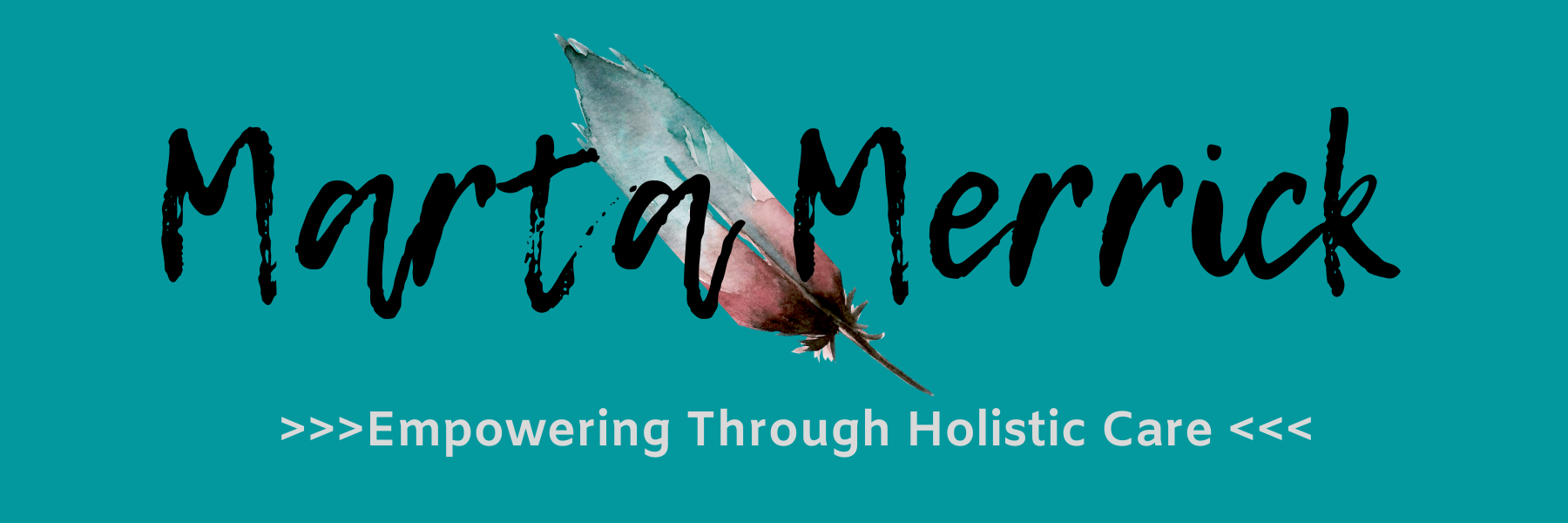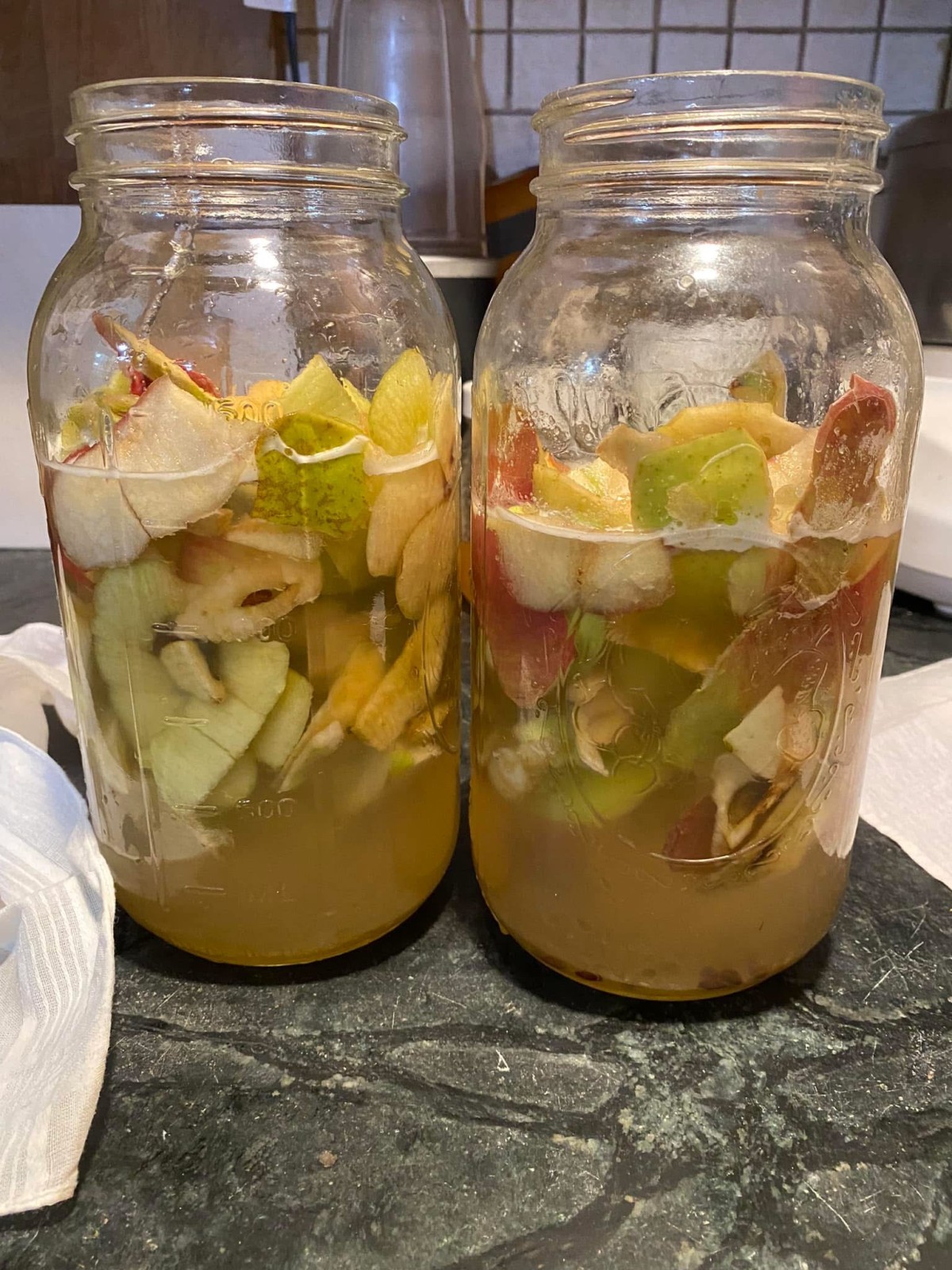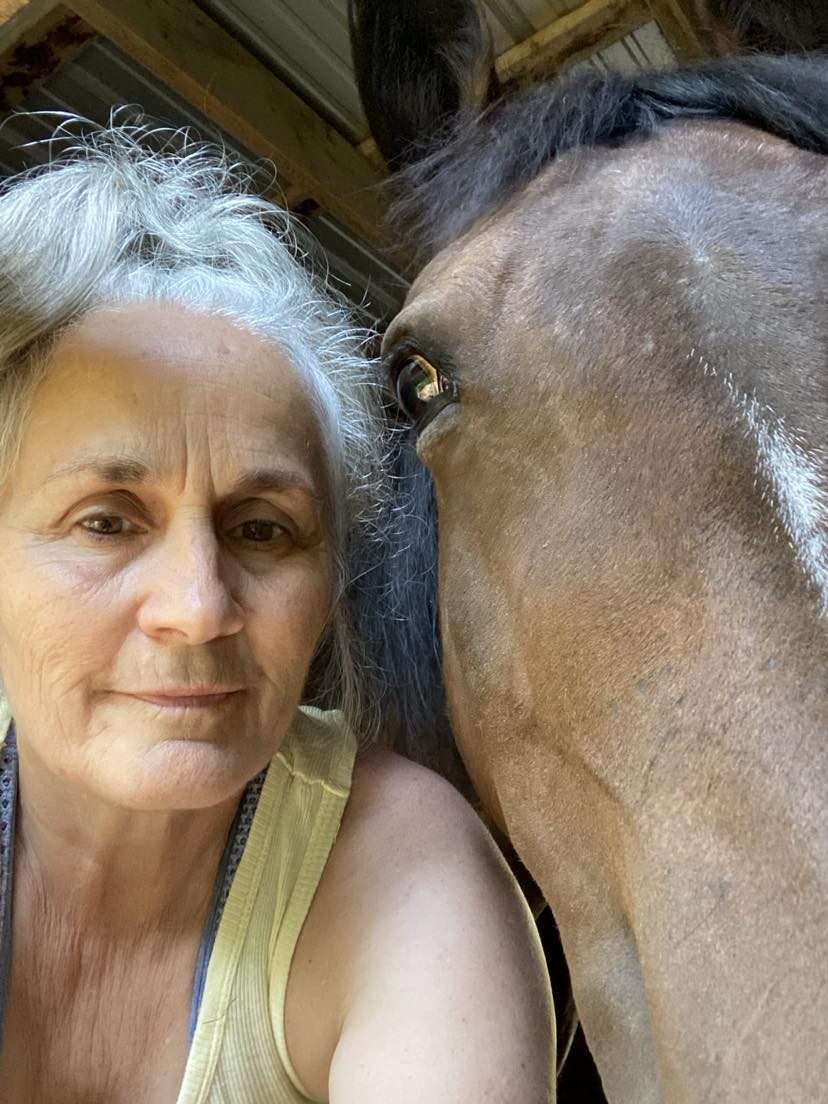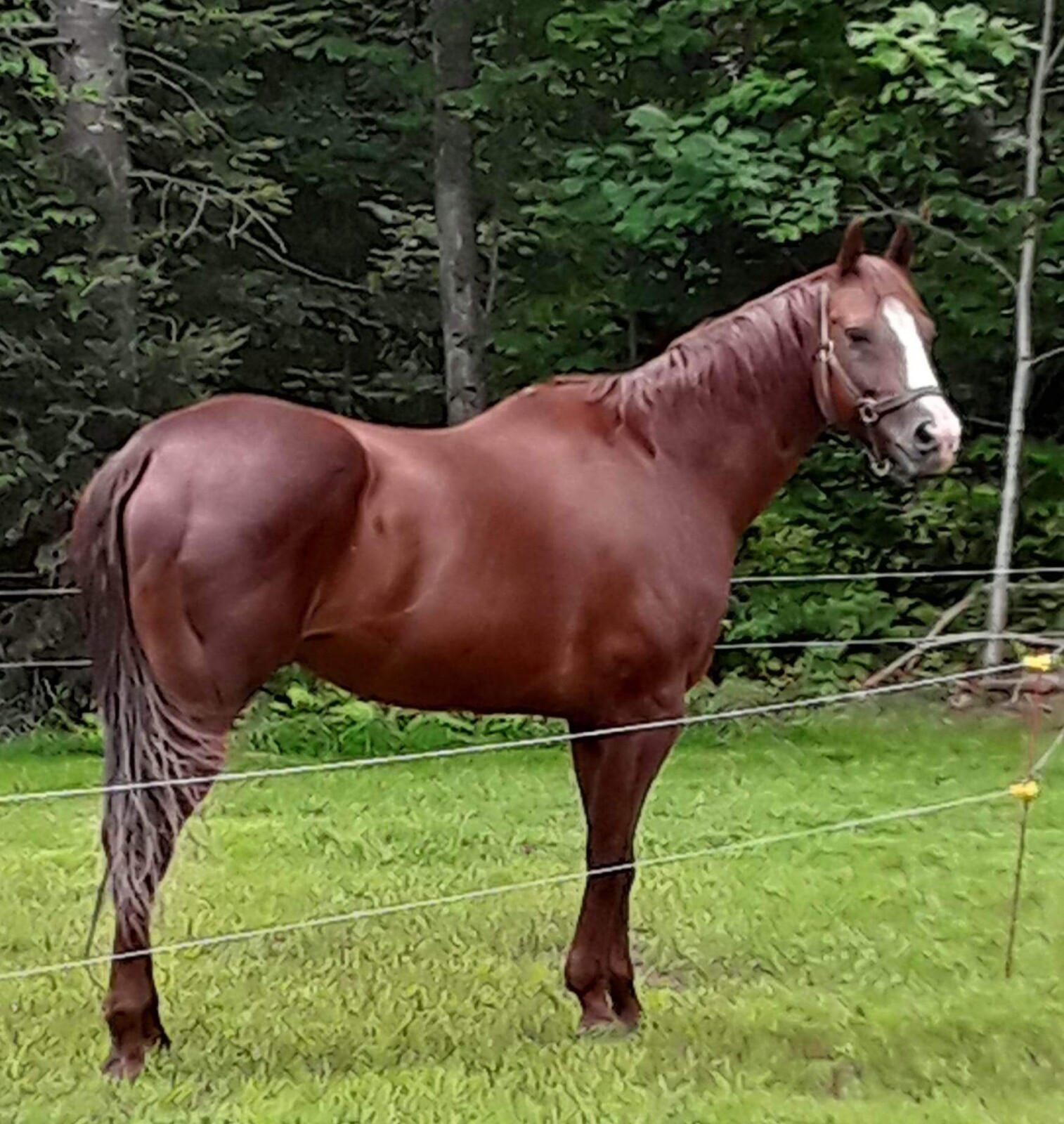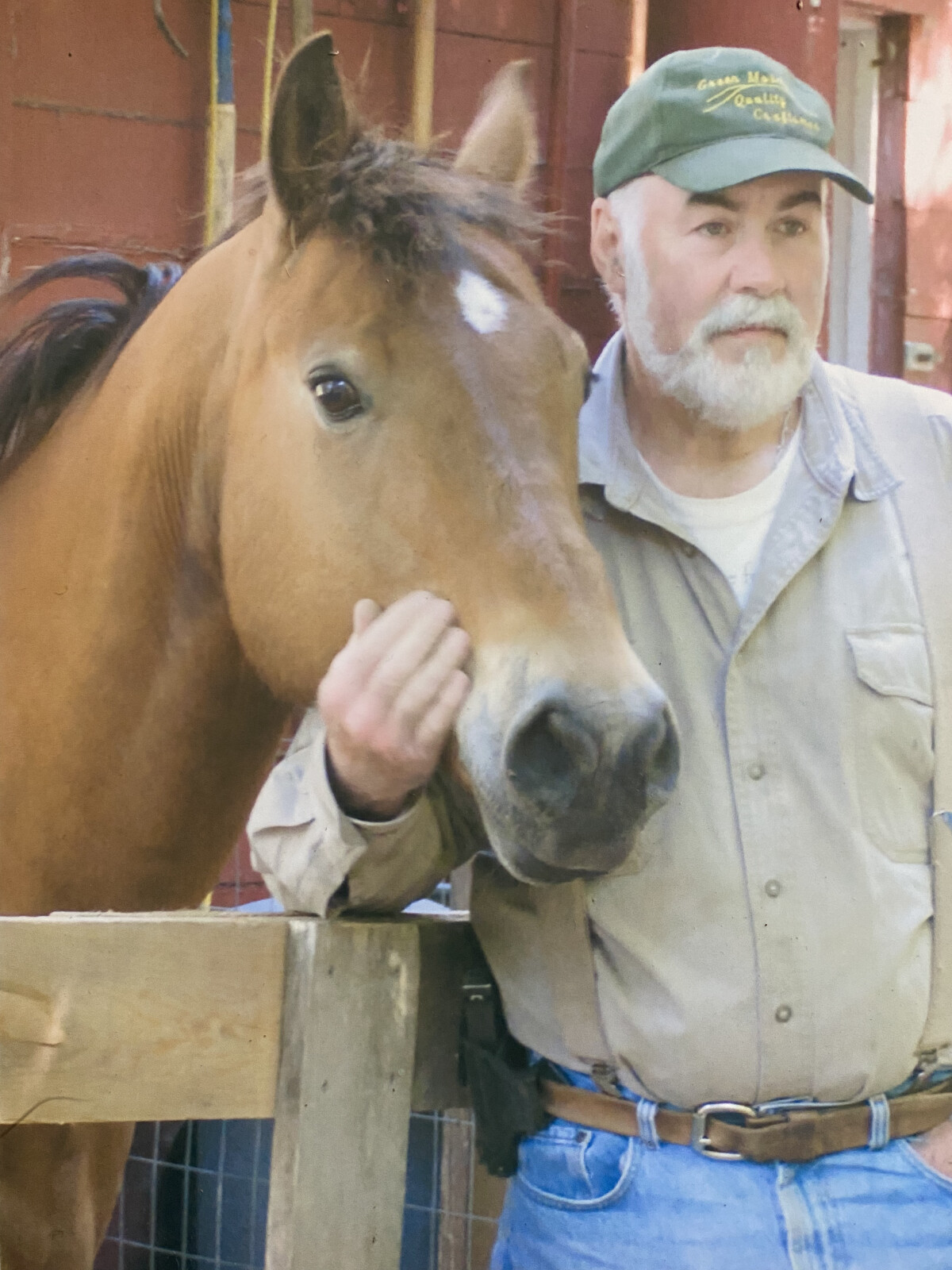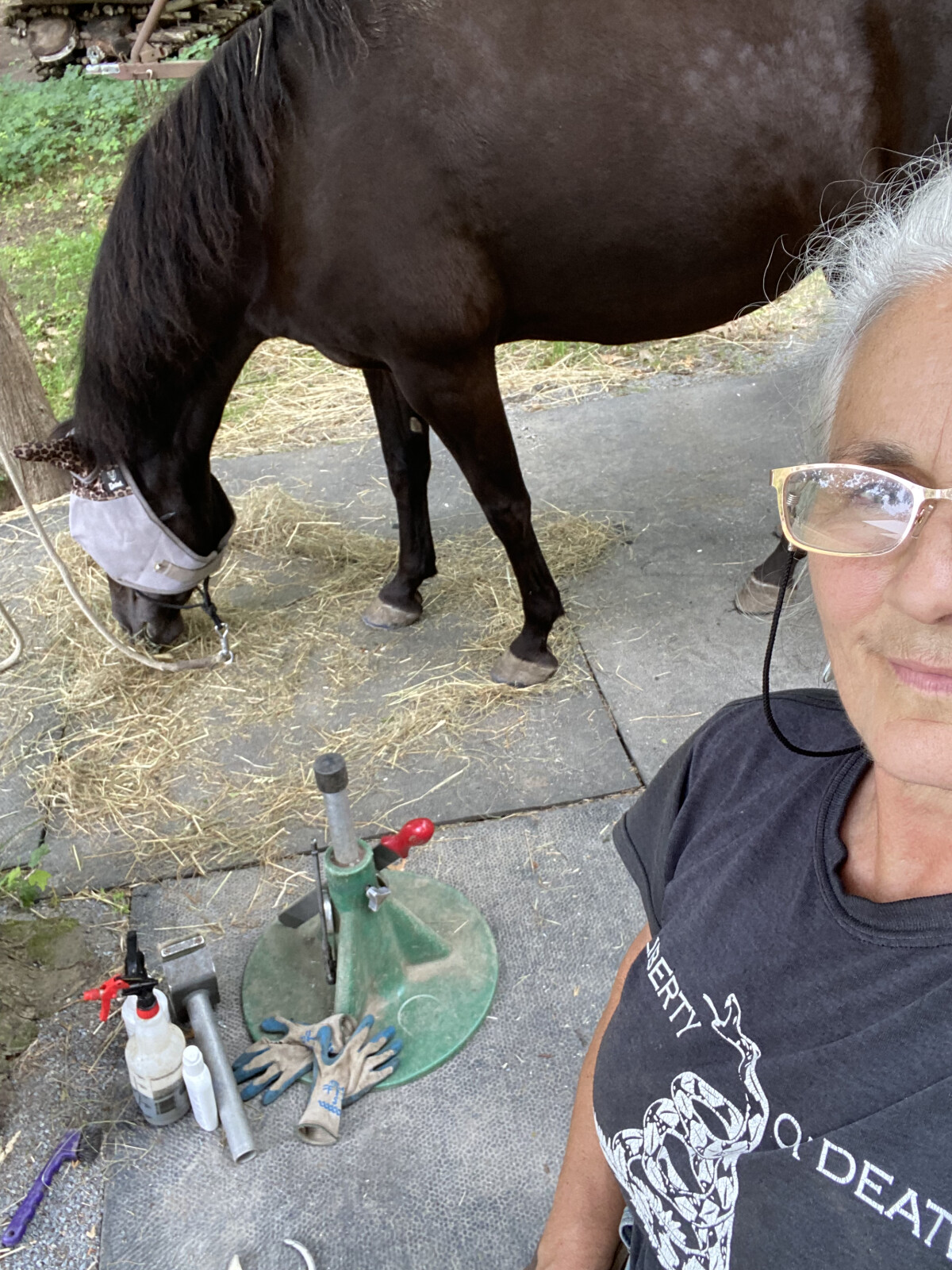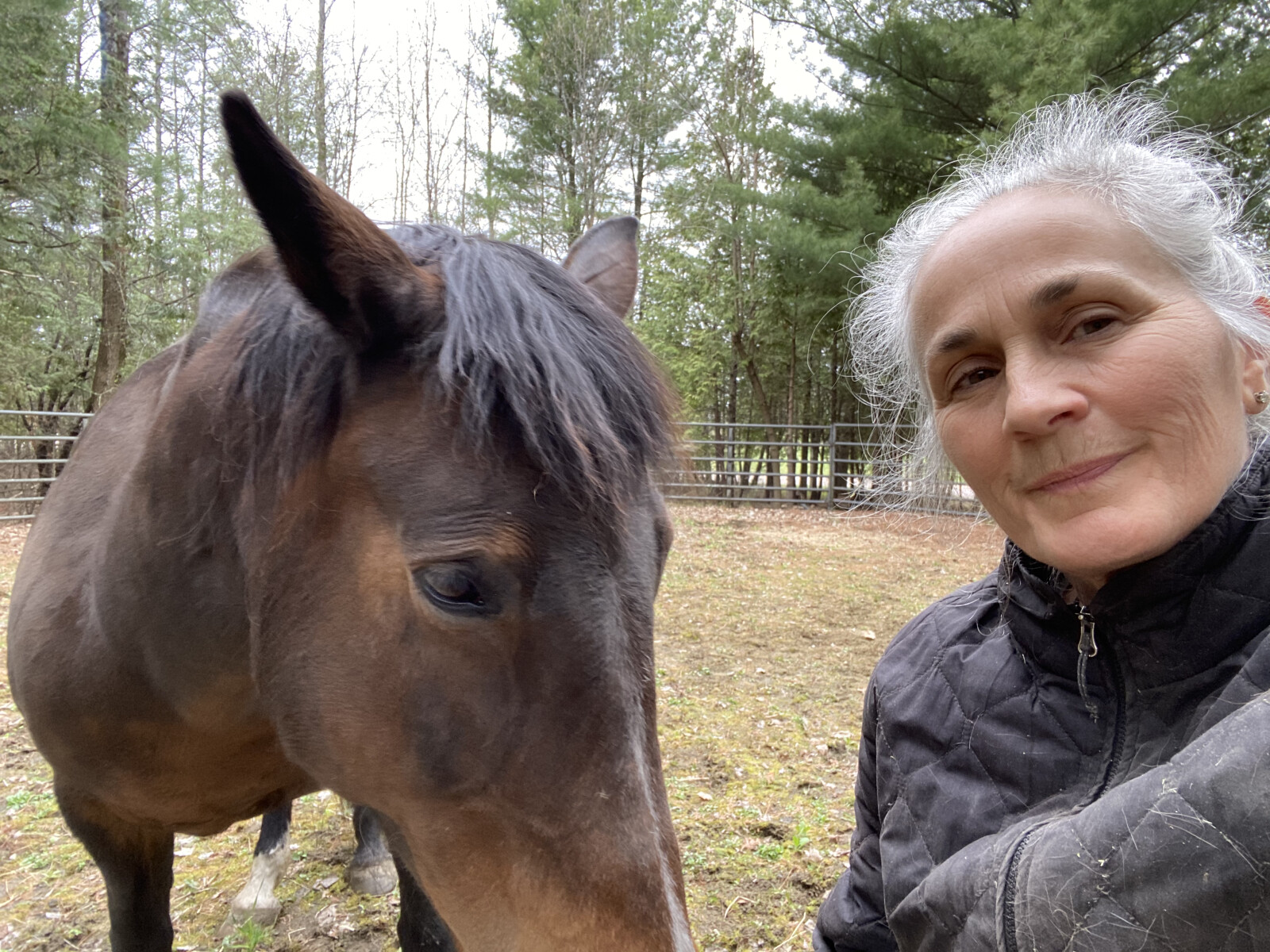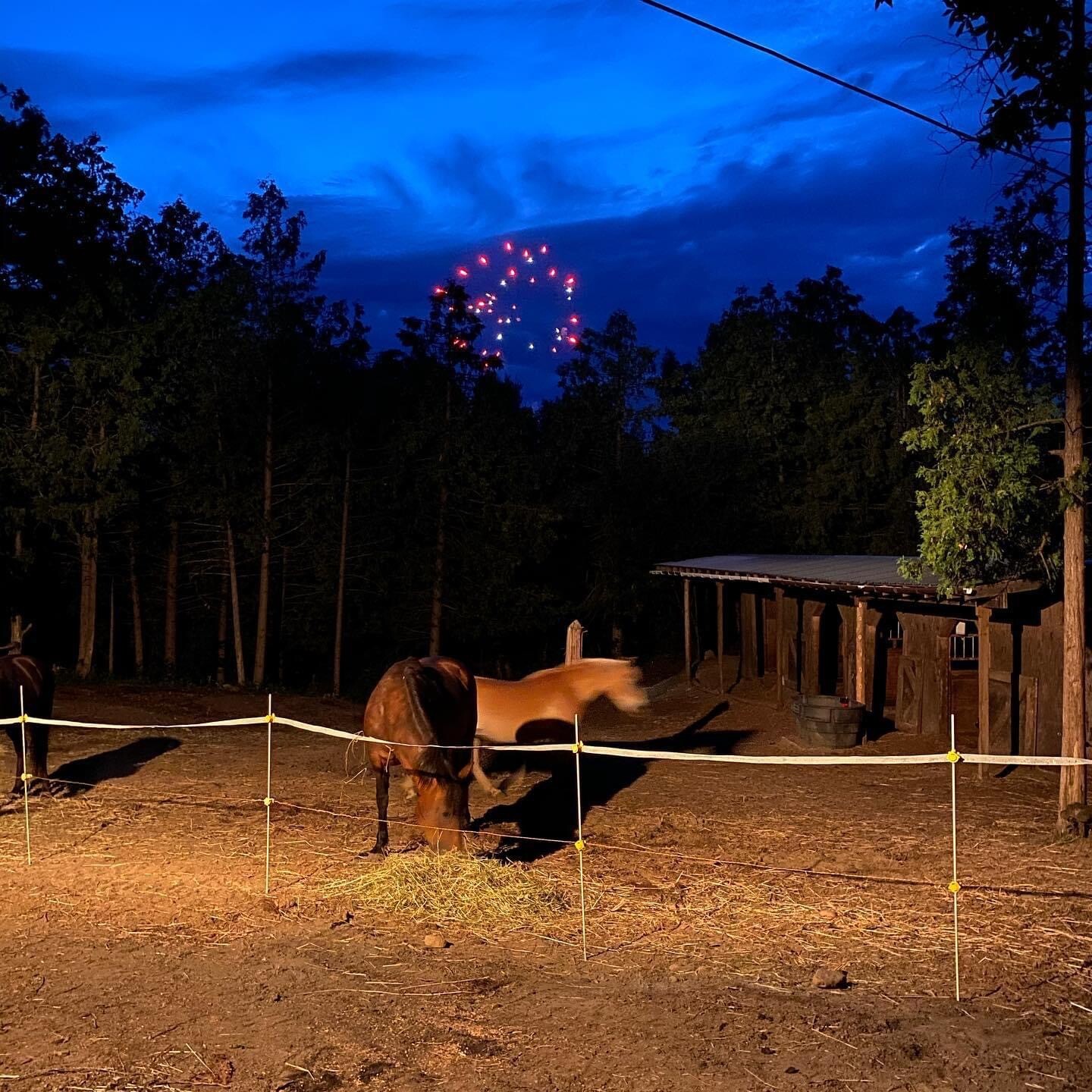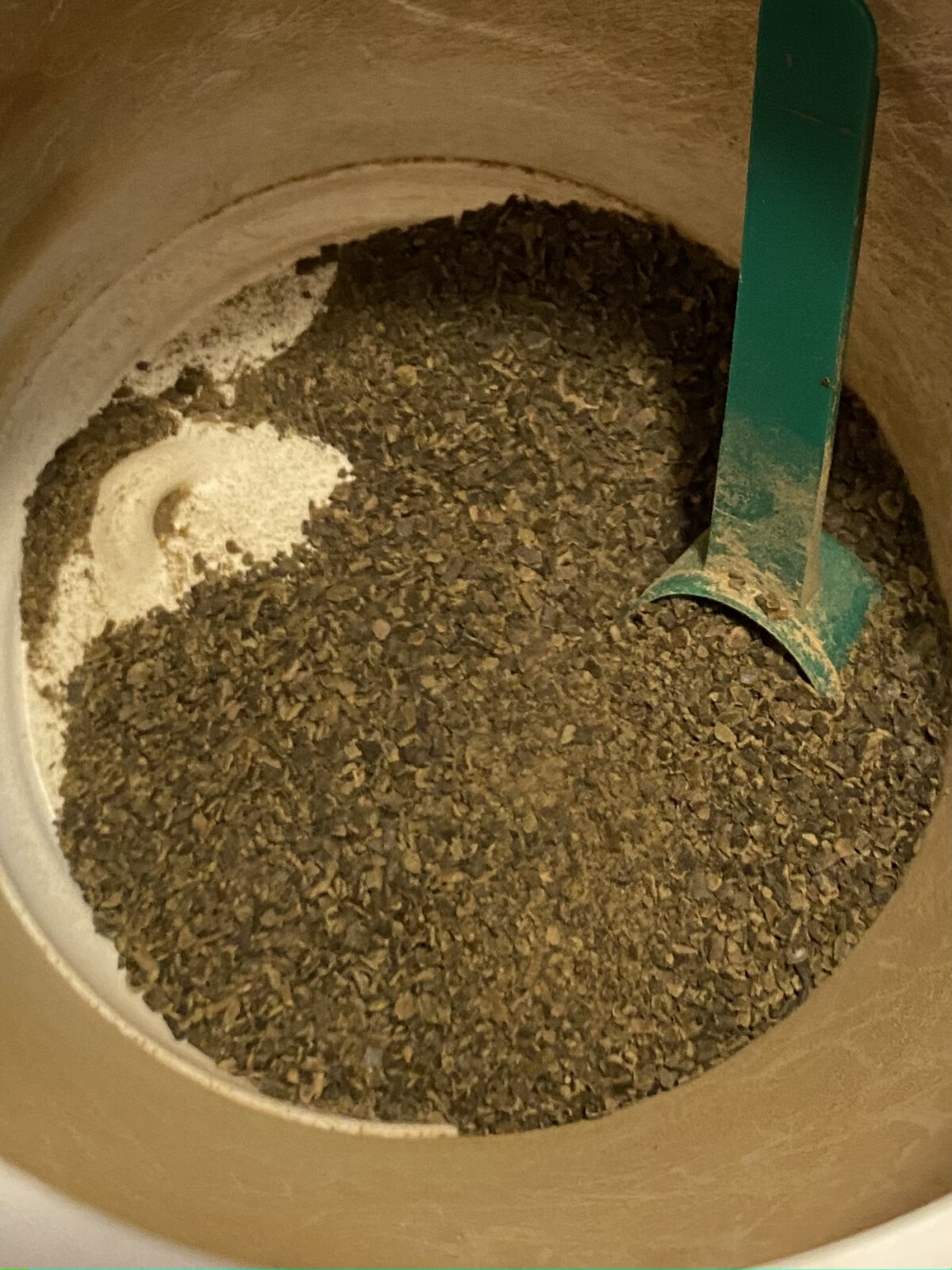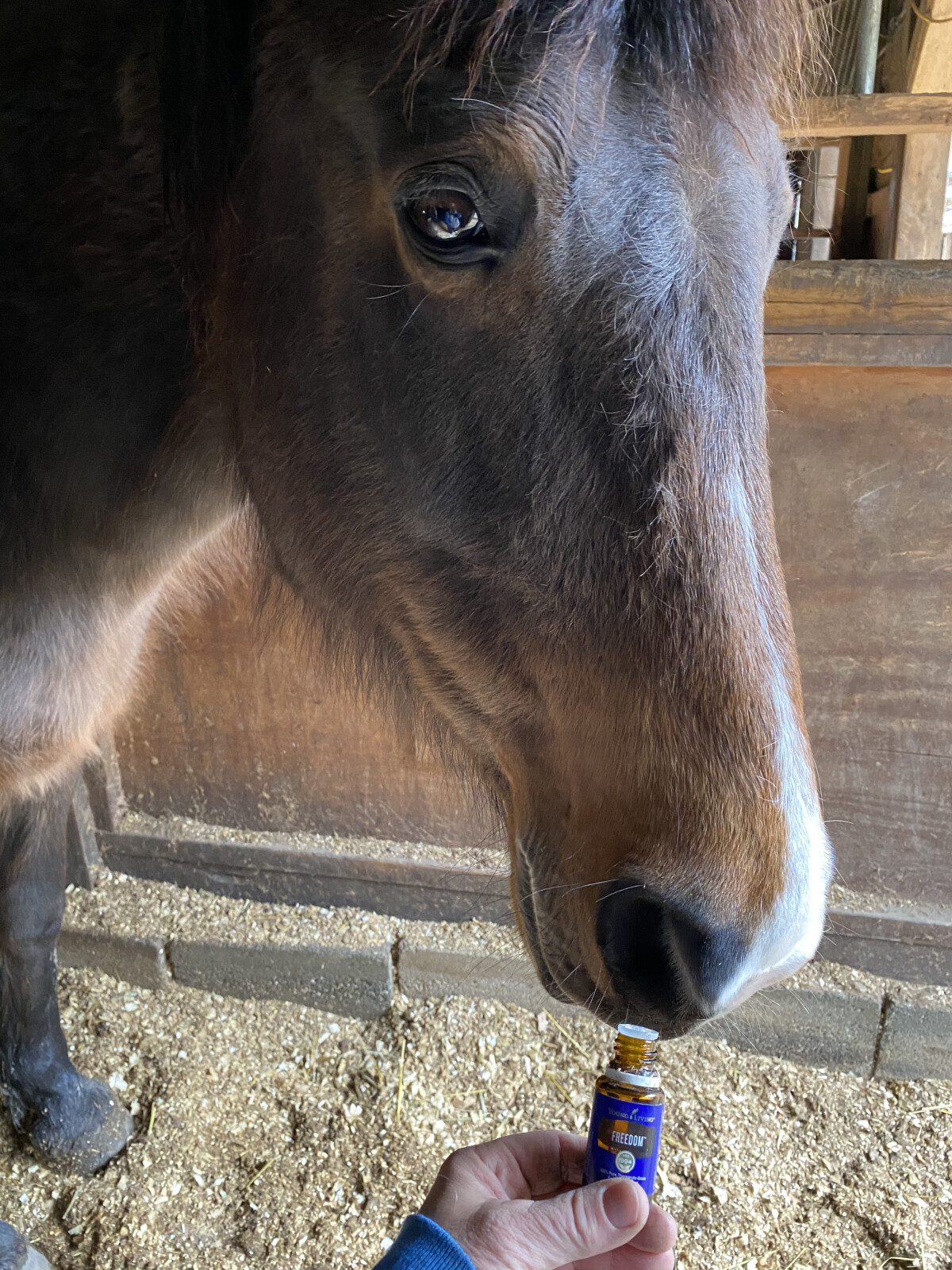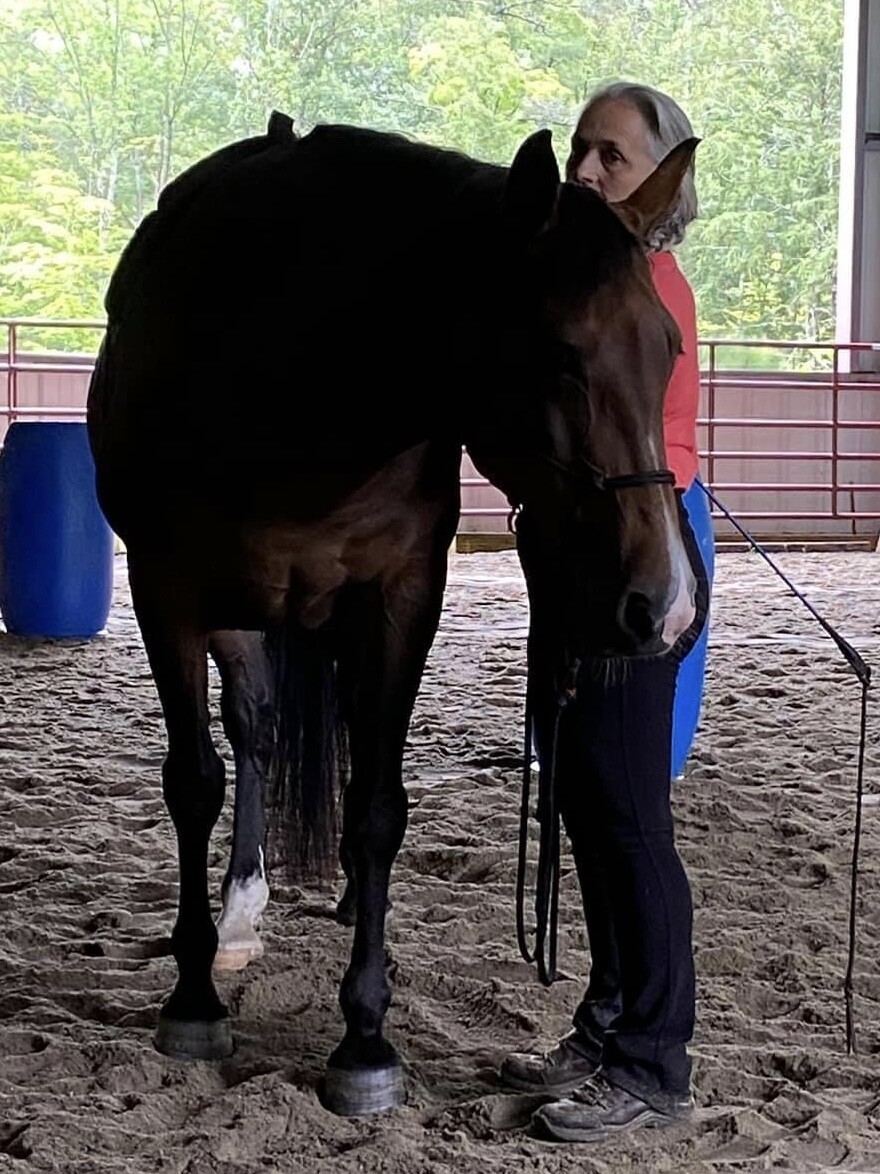
Are you not sure what that even means?
That’s ok. I wasn’t either until a few years back…
Everything carries energy and vibration… plants, rocks, animals and people. The higher the vibration, the greater your health. Generally, a healthy body enjoys a frequency range measured in Megahertz of 62-78 MHz, while disease or illness begins at 57 MHz. Clearing old negative energy away and adding new increased energy to ourselves and horses improves wellness. Below are a few of the ways I have incorporated vibration and energy work into the care of my horses… and myself!
I have always loved plants. The first things I did when I bought my first house was to plant a big vegetable garden and create herb/flower beds. Years later, when my daughter was in high school (we were homeschooling and purchased a home study course), I began studying and learning more about the medicinal nature of plants. I began using herbs regularly, even including them in the care of my horses. I loved mixing herbs for teas, learned to make tinctures and salves and still have a favorite lotion recipe that my husband enjoys.
It wasn’t until I got into horses and my trimming practice that I was introduced to Young Living Essential Oils. The emotional impact that blends of oils had on horses was incredible and undeniable! I began using them daily for my horses and the more I learned, the more I was using them. I soon was using them in their feed and trading out all the usual horse products I had for these essential oils. If you're looking for the highest of quality essential oils and oil infused products, check out the ones I use here, Young Living Essential Oils.
Along my journey of beginning with horses, there were signs and introductions to such things as dowsing (using a pendulum) and muscle testing. I had the opportunity to observe people using these techniques at a friend's barn. To me it was fascinating, but I wasn’t quite ready at that time to investigate those areas.
I needed more work on cleansing myself and my environment. As I made changes in my daily life in these areas (reading food labels, eating cleaner food, using products without harmful toxins), my vibration increased (low vibration = sickness and disease) as did my intuition.
With this raised vibration from cleansing, my fascination with crystals started to blossom.
I had a very old necklace that was my great grandmother’s. It had been hanging on a picture, over my dresser, that I walked by every morning and evening. It is a beautiful, tear drop shaped stone of Lapis Lazuli, on an antique chain. When I’d pass by it, I found myself stopping and touching it. I eventually started wearing it. Lapis is a stone that promotes your intuition. It is also known for harmonizing the physical, emotional, mental and spiritual aspects of a being. Lapis also brings objectivity and clarity.
From this beginning, my love of crystals grew… learning more, collecting and carrying them. I am now starting to incorporate them into my Healing Touch for Animals work. I was so excited to have had a conversation/interview in my horse community about using crystals with the founder of the HTA program, Carol Komitor. If you’d like to watch that, you can find the video in the Guides section of my Hearts of Horses, Empowering Through Holistic Care community.
I learned about a new crystal application tool this past fall, when I attended an online Animal Conference that included a variety of speakers. Through one of the presentations, I learned about these crystal mats and their healing abilities. The crystals raise your vibration and can increase circulation and reduce inflammation. There are mats you can lay on as well as wraps to apply to the body. I can see many uses for this for myself as well as my animals. I am excited to delve more into learning about this tool in the coming new year!
Light therapy is another tool I use with regularity and see a multitude of benefits. I use it proactively, as in promoting the immune system as well as for emergency situations. You can hold the light on your carotid artery for about 10 minutes and thoroughly cleanse your blood!
My red light came in pretty darn handy when my dog, Zeke, got hit by a car a few years back. It’s also great for the cuts and scrapes the horses get on occasion. The light therapy also offers green and blue along with the red with each having its own unique health benefits. I love the one I have as the company offers such great support and education around using the tools and resources. Check them out if you'd like to see what they offer...Photonic Health.
The next thing I found was incredibly powerful to me. A few years back I was fortunate to have attended the Animal Conference at Young Living’s Mona, Utah Farm. There were many terrific demonstrations and information about using essential oils, but the one that captivated me the most was the demonstration with Carol Komitor and Kate Brown on Healing Touch for Animals. I was drawn to everything about it, including the use of the oils, but the desire to know more about influencing the energy of an animal to promote faster healing was so exciting. I had made up my mind right there that I would learn more by taking the Level 1 online course! I have since completed that along with an in-person Level 2 course. If you're interested in learning more, have a look here at Healing Touch for Animals.
Introducing each of these vibration/energy tools into my daily use has been a process over time. Each has proven to be an incredible addition to provide wellness to my family and animals. I am excited to keep learning about more ways to help my animals. If you’re ready to learn more about these energy healing modalities I've talked about above, be sure to find the information on each in the guide section in the Hearts of Horses, Empowering Through Holistic Care community. I'd also be happy to talk with you personally, so feel free to reach out and contact me!
Happy New Year and see you in the Hearts of Horses community...
Marta

There were many times during my full-time trimming days that I felt like a broken record, saying the same thing over and over to clients when it came to taking care of their horses’ hooves…
Often when something is happening to our horses, we just want to make them feel better. So doing something quick, easy and topically is the norm. But there is usually more going on and if we just look a little deeper, we can get at the cause of the problem. Then take steps to remedy it.
Before we get into the solutions, let’s take a look at what is happening in the hoof in terms of an abscess. The connection between the hoof wall and internal structures is made up of laminae. These are finger-like protrusions that when healthy, have a very strong bond and hold the outer wall tight to its internal structures.
When we look at a healthy hoof, we can see smooth, tight hoof wall growing down from the top at the coronary band. When the hoof is fed well with adequate minerals it is a work of art! It is when imbalances occur that inflammation can result causing the laminae to become weak and lose their strong connection. In this weakened state, it is easy for an overgrown hoof to work as a lever to pry the wall away from the sole at ground level. When this happens, it is easy for dirt and debris to make its way up into the hoof.
If you’re a little fuzzy on some of this and would like to know and see more, check out the free workshop in my The Hearts of Horses: Empowering Through Holistic Care community. There are videos that introduce you to the parts of the hoof as well as the internal structures as shown on a mustang cadaver hoof.
In order to get at the source of the abscess issue, we must deal with the inflammation first and remove the cause of it. The number one thing, that many do not realize, is the amount of sugar in our horses' lives have everything to do with their hoof health. Finding the sugars in their hay, grass, grains, supplements, trees containing sugar in their bark within their living space, treats… and removing them will stop the inflammation. Each horse will be different in their thresholds but as their caregiver, it is up to you to figure out their specific needs.
Once the sugar has been removed, make sure your mineral levels are good. Test your hay to see what may be low or missing in your area. Feeding a good supplement is helpful (we cover this in the holistic care community too!). Feeding the hoof is everything!
Another helpful piece to this abscess puzzle is movement. A key part of helping a horse to move out of the discomfort of an abscess is to allow them to move (vs. stall rest). The more the movement, the more the blood flow, the quicker it resolves. Generally, an abscess will last 7-10 days. Set up your horse’s environment so that he is allowed to move yet protected from harm from the other horses.
A third, key piece to this puzzle is their trimming schedule. Getting your horse trimmed based upon their rate of growth and how much they self-trim is beneficial to them. Knowing when the hoof needs to be trimmed is something you must learn to recognize (check the free workshop for help here too!). This will help you to know the appropriate time frame for trimming your horse.
Learning more about the hoof so that you can have a conversation with your hoof care professional will be a huge benefit. You see your horse daily, do all their care and can recognize subtle changes in them. Being able to have a conversation with your hoof care provider about any changes will be most helpful to them for your horse’s care.
If you’re interested in learning more or would like to learn to trim your own horses, grab my course here. It will give you all the tools and information you need for you to learn to trim your own horses’ hooves. When you use the code 50off you can purchase at half price.
Finally, soaking the hoof that is experiencing an abscess. I have found soaker boots extremely helpful and easy to use. As a former EasyCare dealer, I started with the Easy Soaker and really like it. I also use an Rx boot when I need to keep things clean and covered up.
A few of the items I have found most helpful in the soaking process are Epsom Salt, Thieves Household Cleaner, an essential oil blend called Melrose for cleansing and Wintergreen to help with the discomfort. Just a ¼ cup of the salt, half a capful of the Thieves Cleaner, 4-8 drops or so of Melrose and the same for Wintergreen. Add warm water (about a quart) and pour into the boot (which is already on the foot!). I let them soak for 20-30 minutes.
A few of the items I have found most helpful in the soaking process are Epsom Salt, Thieves Household Cleaner, an essential oil blend called Melrose for cleansing and Wintergreen to help with the discomfort. Just a ¼ cup of the salt, half a capful of the Thieves Cleaner, 4-8 drops or so of Melrose and the same for Wintergreen. Add warm water (about a quart) and pour into the boot (which is already on the foot!). I let them soak for 20-30 minutes.
I hope this has been helpful for you and if you haven't already, I hope you will join us in our holistic care community.
Marta

There’s probably a good reason that someone made up that old saying of “an apple a day keeps the doctor away”. My guess is because apples are loaded with all kinds of good nutrients for your body… like enzymes, minerals, trace minerals and potassium. And after all, our horses love them too! These important life building nutrients are all contained in Apple Cider Vinegar.
Quite a few years back I changed how I was eating due to the physical discomfort in my body. I did a fast (3 days without food!) and learned to gradually reintroduce certain healthful foods back into my diet.
As part of my new regimen, I learned about the many health benefits of and started using Apple Cider Vinegar, the good stuff with the “mother” in it! It contains an enzyme that “eats up” the toxic waste in the body.
Some of the amazing benefits I’ve learned about ACV include…
- Detoxifies the blood stream and organs
- Helps to achieve and more balanced pH
- Assists kidneys, bladder and liver
- Promotes circulation
- Supports digestion
Also for animals (including the above)…
- Deters fleas, ticks and mosquitos
- Relives skin and ear problems
- Promotes a healthy, shiny coat
I started drinking ACV in a tea first thing in the morning. One of the things it does is jumpstart my digestive system. All I know is that I am feeling so much better by starting my day with ACV/Thieves tea with honey!
At some point along the way I decided that it was doing so much good for me that I should give it to my horses too! I was already using it topically for their hooves for thrush by soaking and spraying. The ACV can be added to their water for drinking, but for me, I just add it to their daily feed. I add about a third of a cup of ACV to a liter bottle and fill the rest with water. Then I mix some into their milled flax and supplements.
Potassium is one of the key constituents offered in ACV. Did you know 75% of the body’s potassium is found in skeletal muscle and is necessary for function? Horses are able to excrete excess potassium through urine or sweating but when there is a deficiency in the body, there can be some pretty detrimental effects.
A horse with low potassium will exhibit…
- Muscle weakness
- Fatigue
- Reluctance to exercise
- Decreased water and food intake
- Restlessness
- Spookiness
Offering your horse a lifestyle with unlimited forage will help to avoid low potassium issues. It’s always good to test your hay to know what the levels of minerals are contained within it. From there you have a clearer picture on what to supplement.
An excerpt from the book, Apple Cider Vinegar; Miracle Health System by Paul Bragg ND PhD and Patrice Bragg ND PhD…
Hippocrates, the Father of Medicine, in 400 B.C. treated his patients with amazing raw Apple Cider Vinegar because he recognized its powerful cleansing and healing qualities. It is a naturally occurring antibiotic and antiseptic that fights germs and bacteria in the body.
I have found that adding Apple Cider Vinegar to my horse’s daily routine has been a great boost to their health. It has added another beneficial layer to their holistic lifestyle!
Give it a try and see how your horses like it.
Marta
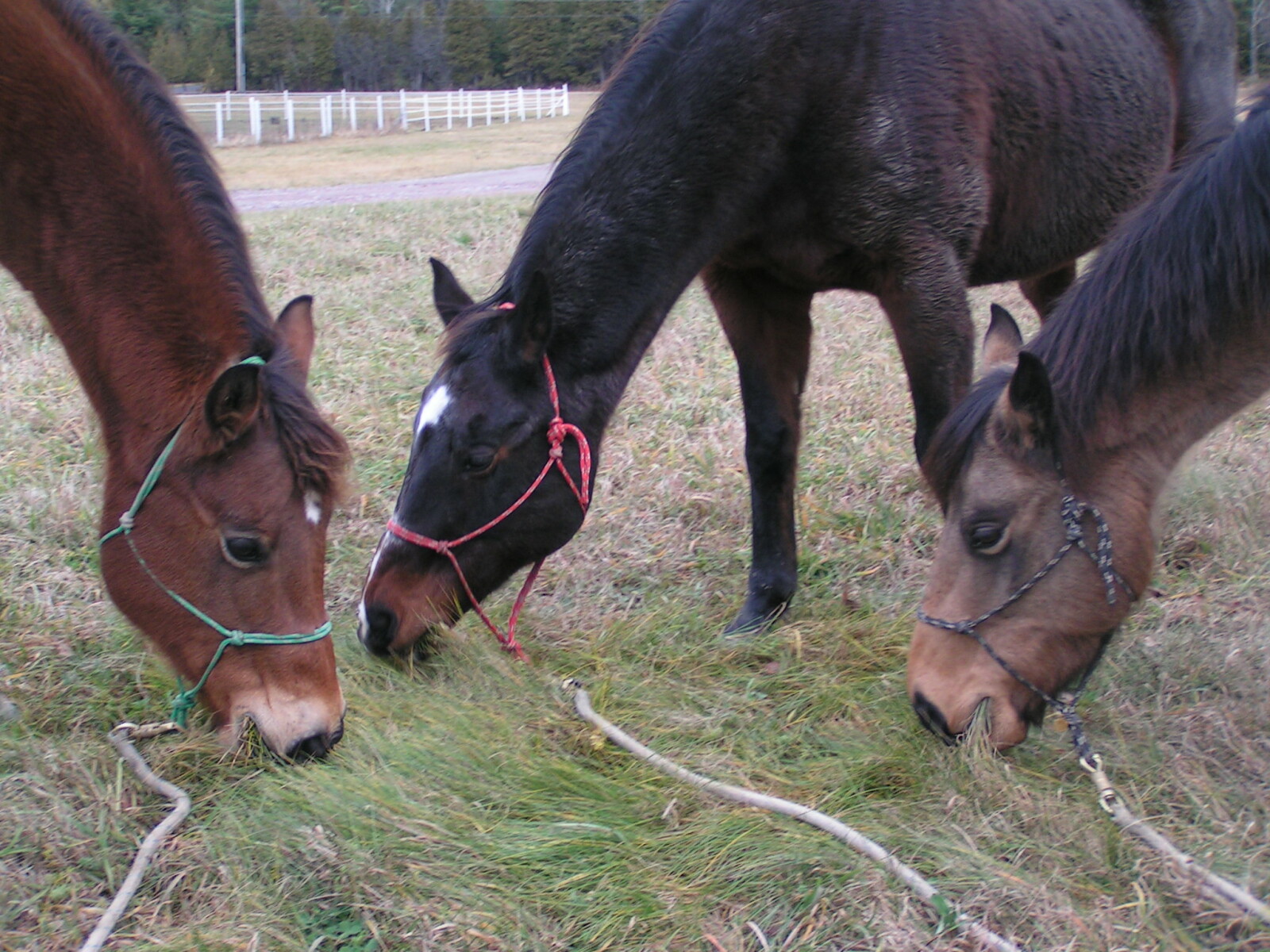
We live on about 3 acres of rocky limestone hillsides loaded with cedar trees and roots! While it’s not what one would think of as an ideal horse environment, it is actually a far better choice of living space, especially if your horse has metabolic challenges.
At the beginning of my horse journey, I was introduced to the benefits of creating a track system for my horses’ living environment. It benefitted their hooves, their digestion, in general their overall wellness. It was easy for me to see this was what I wanted for my horses. In addition, the concept fit extremely well with our small acreage and varied terrain. We even have access to an old road to utilize which has a great hard packed base for a trail.
As fate would have it, I acquired a couple of foundered horses (from my trimming practice) as well as a Morgan horse (a hardy breed that does not need rich feed to maintain weight and good health). Our track system has proved to be the ideal living set up for horses with metabolic issues, hoof troubles and for avoiding the problems with spring and fall grasses.
Our track contains no lush grass. It does offer a variety of plants, shrubs and trees that our horses browse as they move around the different paths on the track system. We have the benefit of monitoring our horses’ grass intake by allowing them to roam the rest of the property at strategic times to benefit them. We choose times when the sugars are lowest in the grass. When the sun is out, plants are producing their sugars for energy through photosynthesis. This is high sugar content time and should be avoided. It is at night when the grasses use up their sugar stores from the day, so the very early morning is the safest time for the lowest sugar levels.
Once the fall comes and the temperatures drop at night, grass begins to hold onto their sugar stores for its growth. This “stressed” grass is now very high in sugar. Any stressed grass will have increased sugar levels so be aware, especially for your at risk horses. Some other ways that grass gets stressed are by over-grazing, drought and frost. Even the brown grass late in the fall when it’s still warm during the day will have sugar filled green sprouts that your horse would love to snack on!
Waiting for the temperature swings to stop and the grasses to go dormant is a safe option for your horse.
Other safe options…
- Consider setting up a track system or at least elements of it for your horse. Creating a forage based, movement centered space will do wonders for them!
- Create a dry lot for your horse and encourage movement within the space through the placement of hay bags or hay piles.
- Use a muzzle and monitor their time of day out as well as the amount of time out.
- Consider a probiotic to benefit their gut health. This is a key component to overall health. Life 9 is the probiotic I love and use for my herd.
If you’re curious to learn more about setting up your own track system, take a look at Guide 3 in my community The Hearts of Horses; Empowering Through Holistic Care. You’ll find videos with information on how to create your own track system.
May you and your horses enjoy this fall season in good health...
Marta
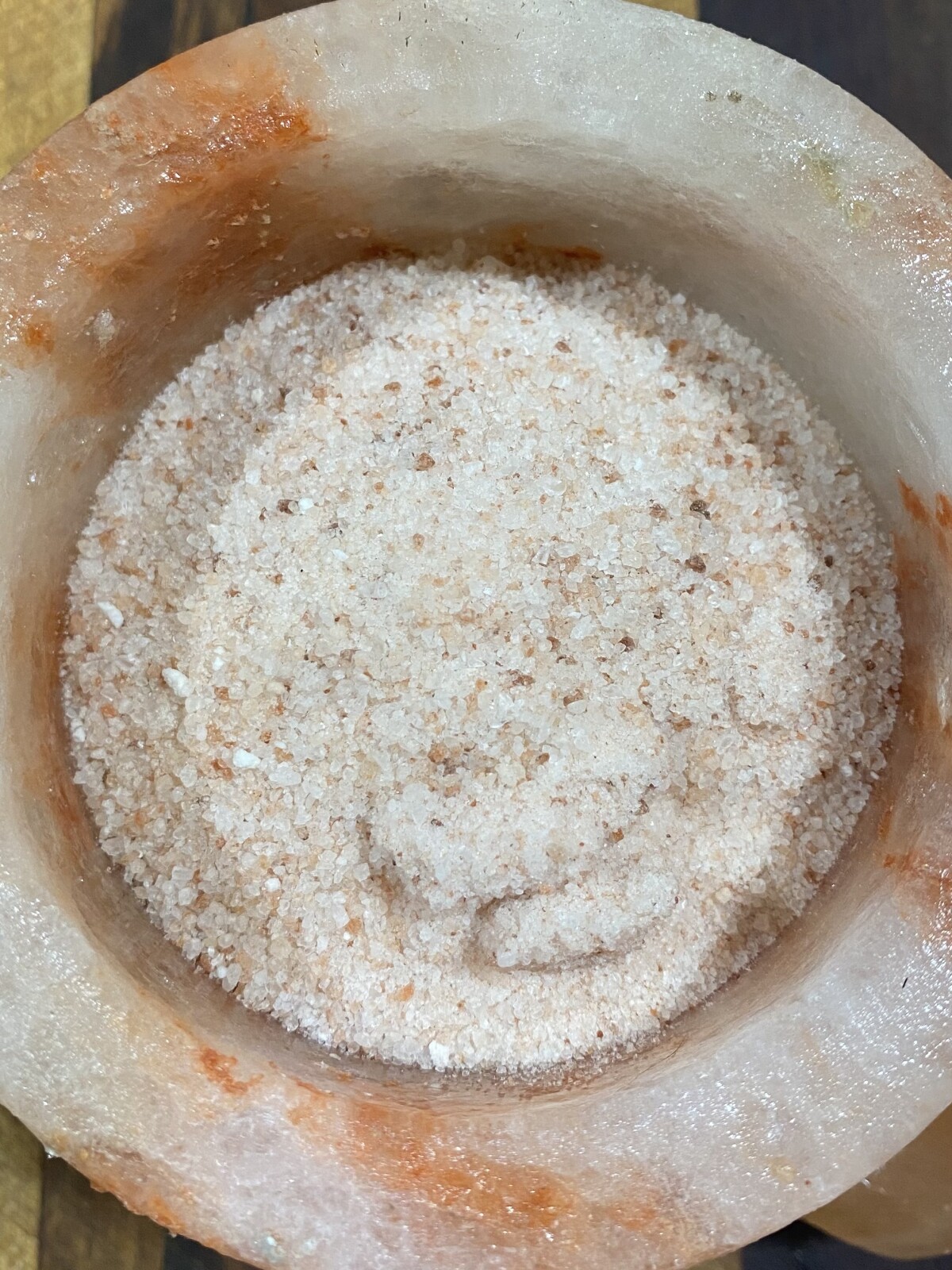
A recent post that I shared in my Hearts of Horses group about the importance of salt for our horses especially in hot weather, opened a discussion on the use of Himalayan salt. It got me wondering…so I did a little research.
The only mineral which a horse has a taste for is salt. In situations where an animal is deprived or deficient, they will seek it out readily. As caregivers for our horses, it is critical that we provide some form of salt, as many functions of the body depend upon it.
Some of these critical functions are…
- Heart contraction
- Intestinal movement and fluid balance
- Absorption of nutrients in the gut
- Muscle contraction
- Nerve function
- PH balance
- Keeping the body hydrated
- An averaged size horse, in cool weather, needs a minimum of 1 oz per day of salt. 2-4 oz for that same horse in hot weather.
Legend has it that the salt beds of Pakistan were discovered by Alexander the Great’s horse, Bucephalus, who stopped to paw and have a lick! Side note: Bucephalus died in battle in that area and a town was later named after him.
Much of the Himalayan salt we purchase originates from an area of hills in Pakistan known as the “salt range” which is hundreds of miles away from the Himalayan Mountains. The hills are a remnant of a lagoon that existed 600 million years ago.
This Himalayan salt does contain minerals, but only in very minute amounts. Such minerals as magnesium, zinc, calcium and even iron. Again, they contain only very minute amounts that would not be enough to consider as a supplement for your horse.
The fact that Himalayan salt is very hard, in chunk form, your horse would not be able to bite it. Even with steady licking, they would not be able to consume the minimum needed on a daily basis especially in hot weather! However, the salt chunk is resistant to rain so hanging it for your horse, in or out of the stall/barn area would be a great relief and/or distraction during a confinement situation.
The fact that it is salt, means that it does encourage your horse to drink more water. This is always a good thing as approximately 70% the body is water and many body functions also require it!
There is one very important mineral that you cannot get from Himalayan salt though and that is iodine. Iodine is necessary for healthy thyroid function. The thyroid regulates hormones and is easily thrown out of balance by deficiency and/or toxins that are in many horse care products. Granulated iodized white salt covers your bases on this one. Or if you feed a kelp product your horse is probably already receiving their necessary amount of iodine.
While the benefits and popularity of the Himalayan salt make it seem terrific for your horse, the bottom line is… it is safe and ok for your horse. It can even be included in the salt/mineral area of your track set up. It would also be beneficial as a relief and distraction for a confined horse.
The big question you want to ask yourself is… are my horses getting their minimum daily requirements for salt? The easiest way for them to get this is by providing a granulated salt, either in their feed or free choice in their living space as they generally cannot take in enough by licking a block.
Are you interested in more helpful information for caring for your horses? Join the community I mentioned, The Hearts of Horses; Empowering Through Holistic Care and be sure to look through the GUIDE section at the top of the page for all kinds of helpful holistic care topics!
All the Best,
Marta
